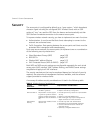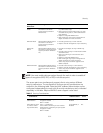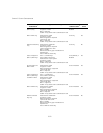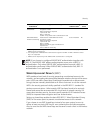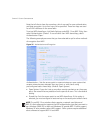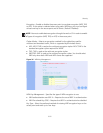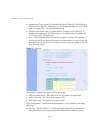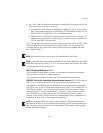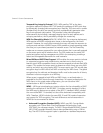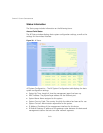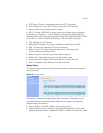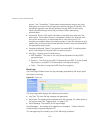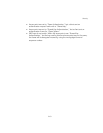
5-57
Security
Key Type – Select the preferred method of entering WEP encryption keys on the
access point and enter up to four keys:
• Hexadecimal: Enter keys as 10 hexadecimal digits (0-9 and A-F) for 64 bit
keys, 26 hexadecimal digits for 128 bit keys, or 32 hexadecimal digits for 152
bit keys (802.11a radio only). This is the default setting.
• Alphanumeric: Enter keys as 5 alphanumeric characters for 64 bit keys, 13
alphanumeric characters for 128 bit keys, or 16 alphanumeric characters for
152 bit keys (802.11a radio only).
Key – Selects the key number to use for encryption for each VAP interface. If the
clients have all four keys configured to the same values, you can change the
encryption key to any of the four settings without having to update the client
keys. (Default: Key 1)
Wi-Fi Protected Access (WPA)
WPA employs a combination of several technologies to provide an enhanced
security solution for 802.11 wireless networks.
The access point supports the following WPA components and features:
IEEE 802.1X and the Extensible Authentication Protocol
(EAP):
WPA employs
802.1X as its basic framework for user authentication and dynamic key
management. The 802.1X client and RADIUS server should use an appropriate
EAP type—such as EAP-TLS (Transport Layer Security), EAP-TTLS (Tunneled TLS), or
PEAP (Protected EAP)—for strongest authentication. Working together, these
protocols provide “mutual authentication” between a client, the access point,
and a RADIUS server that prevents users from accidentally joining a rogue
network. Only when a RADIUS server has authenticated a user’s credentials will
encryption keys be sent to the access point and client.
NOTE: Key index and type must match that configured on the clients.
NOTE: In a mixed-mode environment with clients using static WEP keys and WPA,
select WEP transmit key index 2, 3, or 4. The access point uses transmit key index
1 for the generation of dynamic keys.
NOTE: To implement WPA on wireless clients requires a WPA-enabled network
card driver and 802.1X client software that supports the EAP authentication type
that you want to use. Windows XP provides native WPA support, other systems
require additional software.




